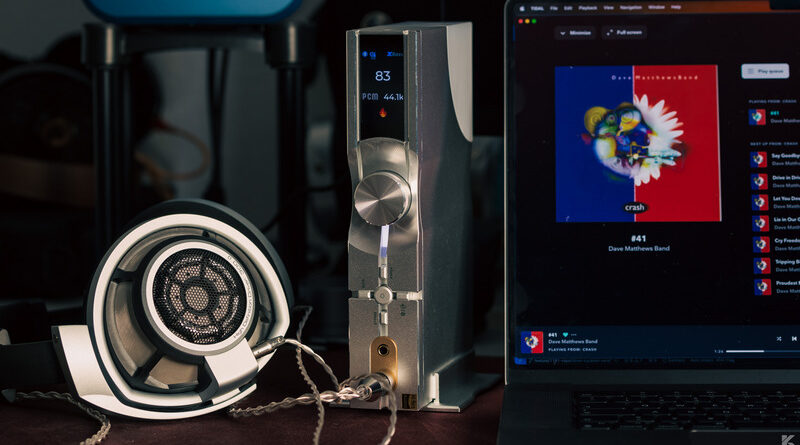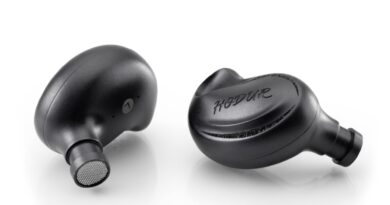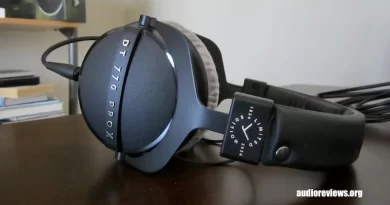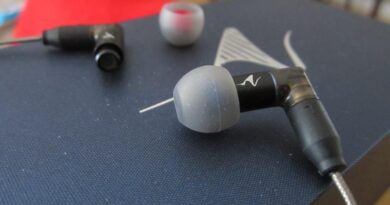iFi Neo iDSD2 Review (1) – A Proper Upgrade
Pros — Sleek design
– Has all the connectivity options one can ask for
– Exceptional performance over LDAC
– Engaging sound with upgraded amp section
– Remote control is handy
Cons — Neo iDSD2’s Amp section is not powerful enough to drive inefficient headphones
– aptX Adaptive performance can be device dependent
– iPower X could be included in the packaging given the asking price
– Background hiss at the highest gain setting
In this Article
INTRODUCTION
It is update season again, with iFi overhauling parts of its lineup. First up was the hip-dac 3, then the Diablo2 — and Neo iDSD2 arrived in tandem.
I reviewed the original Neo iDSD almost 3 years ago, and found it to be lacking in the amp section. The DAC performance was excellent, but the meek amp output held it back from being a universal recommendation. iFi has taken the sweet time to refine all “controversial” aspects of the original.
The amp section is noticeably improved with better power delivery into high impedance loads. Meanwhile, the noise issue with sensitive loads has been taken care of by the inclusion of IEMatch. Moreover, the general build and finish has become further refined, with a new UI and display, extra buttons on the front for easier control, and external app support for OTA updates and more.
Sounds like a winner so far, but then you look at the… upgraded price tag, which is almost $150 extra over the OG version, placing the Neo iDSD2 near the kilobuck range. In the days of measurement-topping budget gear, the Neo iDSD2 needs to have a few unique trick up its sleeve to justify the extra dough.
Note: the ratings given will be subjective to the price tier. IFi Audio was kind enough to send the Neo iDSD2 for evaluation.
IEMs and headphones used: Symphonium Crimson, Campfire Holocene, Sennheiser IE 900, Sennheiser HD 800, Hifiman HE-6se V2
Price, while reviewed: $900. Can be bought from Amazon.
PHYSICAL THINGS AND USABILITY
PACKAGING AND ACCESSORIES
iFi Audio bundles practically everything you will need to get the Neo iDSD2 up and running. Aside from a 12V iPower V2 power adapter, you get a pair of RCA Cables, a USB cable, a handy remote control, and a stand to vertically orient the Neo IDSD2.
The only thing I’d change about the packaging is the supplied power adapter. The iPower X is noticeably “quieter” than the entry-level iPower adapter that’s bundled with the Neo iDSD2, and given the premium pricing, I’d have preferred the more “upscale” adapter.
BUILD QUALITY
The basic design language is similar to the OG Neo iDSD, with a sleek, sandblasted aluminum frame; a large, multi-functional rotary encoder placed in the center, while the display and the headphone outputs flank it on both sides.
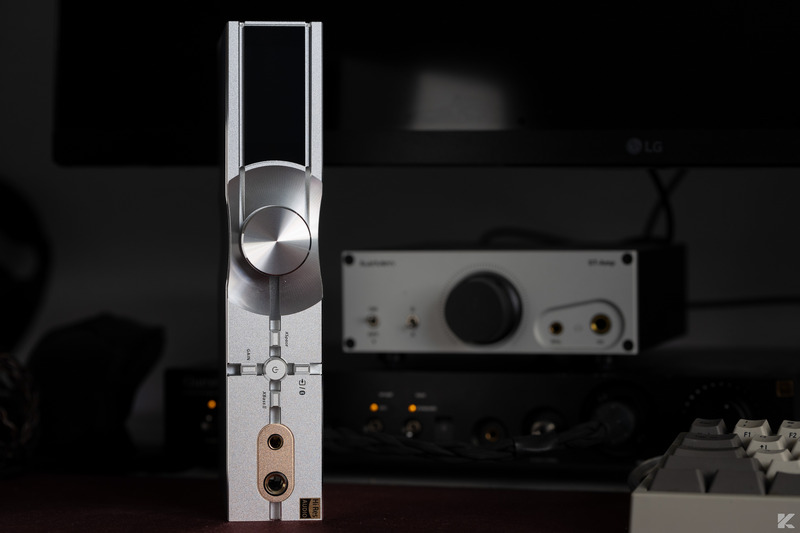
One of the key elements of the design is the vertical orientation capability. With the supplied stand you can easily prop up the Neo iDSD2 on your desk, leaving horizontal space to place your speakers or other amps. There’s a built-in accelerometer as well that automatically rotates the display.
The central rotary encoder stands out with its knurled finish and excellent tactile feedback. There is still some wobble when you try to press it inwards. Frankly, only way to avoid that would be to use a more complex setup where the outer ring and the inner “button” needs to be separated. iFi tried to keep things simpler here I guess.
The buttons have been improved from the OG Neo iDSD it seems, with a more defined feedback and less wobble than before. They are still a bit stiff so the remote is better for most operations. Do note that you have to aim the remote directly at the Neo iDSD, otherwise the infrared signals are not picked up well.
The sides now have an opaque acrylic “cut-out” for better RF signal transparency, which should improve BT reception and transmission performance. Another readily noticeable aspect over the first version is the weight of the unit, which feels more substantial. The OG Neo iDSD feels somewhat hollow and less rigid in comparison.
Overall, excellent build quality and industrial design, as expected from iFi.
INPUTS AND OUTPUTS
The Neo iDSD2 does not skimp on the input options at all. In fact, there are a few surprises here.
First of all, you have the power input that accepts 9V to 15V AC-DC adapters. The USB 3.0 type-B port is there, alongside the coax and optical inputs. Then there is a 10 MHz external clock input (via BNC) which is somewhat rare in the under USD$1000 range of sources. On paper, it should provide even better jitter performance when combined with an external clock.
Lastly, there are the analog/pre-amp line-outs in the form of both single-ended RCA and balanced 4-pin XLR. Strangely enough, there is only a single-ended 3.5mm line-in and not the usual 4.4mm analog input that iFi tends to have in their amps.
It’s a strange omission given the amp section is marketed as fully balanced internally, so there needs to be an additional single-ended to balanced conversion in the signal path if iDSD2 is used in amp only mode.
The headphone outs are all placed in front, with both 6.35mm single-ended and 4.4mm balanced outputs available. They have auto “IEMatch” enabled at the lowest gain setting, taking care of hiss with sensitive IEMs.
TECH SPECS AND INTERNALS
Let’s get the spec sheet out of the way first:
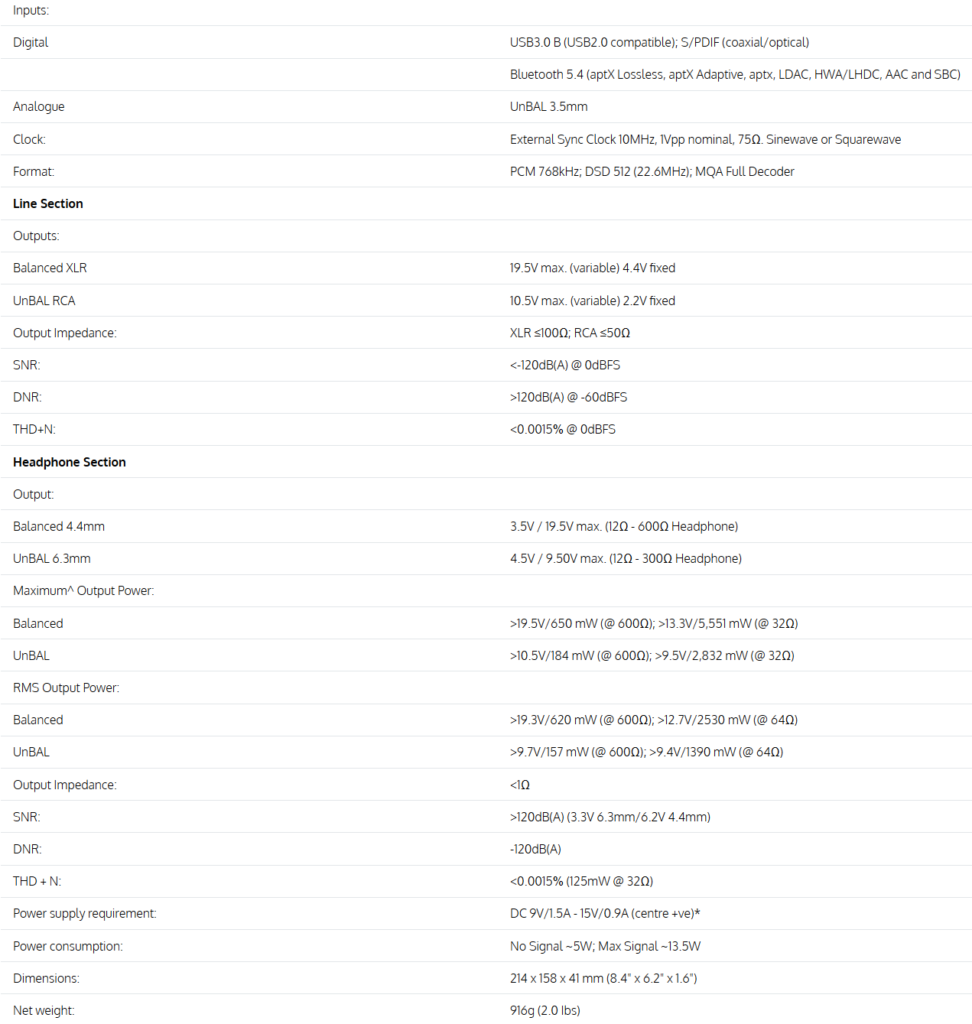
The iFi Neo iDSD2 uses a Burr-Brown chip as per tradition. The BT5.4 is one of the highlights of the product and has both LDAC and the newest aptX Lossless codec support.
iFi also uses a new proprietary PureWave topology where they go for a dual-mono setup with shorter signal paths than their previous designs. The default firmware is GTO-enabled by default. I am happy to see that iFi has brought back the xBass and xSpace features, both of which work exceptionally well here.
The internal components are all high quality as expected: TDK/Murata caps, FET-based switching to mute those annoying “pops” you encounter on some DAC/Amps, and native MQA full-rendering support. I confirmed the latter by setting up Tidal on Windows in exclusive mode and playing MQA Master files, which were seamlessly handled by the Neo iDSD2 (indicated by displaying MQA on the display). At this juncture I should mention that it’s advised to install the iFi Neo iDSD driver package if you’re on Windows (Mac version coming soon). You can get it here.
The Bluetooth performance in LDAC was excellent. I did not notice any dropouts and not much fidelity was lost over wired USB connection. However, aptX support was a bit iffy with Samsung phones, likely due to Samsung’s somewhat poor implementation of the codec over other manufacturers.
One last note regarding amp specifications: the power rated is likely “peak” power, as I do not find the balanced output to provide 620mW of current into a 600 ohms load. The very high rated current delivery into lower impedance loads (max of 5.5W into 32 ohms) also did not really translate to real world usage, as certain planar magnetic headphones needed the 3rd gain setting to be driven properly. iFi’s FAQ section is also somewhat vague about the exact methodology used.
Speaking of gain, there are 4 different gain levels, with the first one being for sensitive IEMs, the second and third one for most headphones and IEMs out there, and the last one for very difficult to drive loads. The last gain level has audible hiss with even somewhat sensitive IEMs and headphones, so caution is advised while using that one.
IFI NEO IDSD2 SOUND CHARACTERISTICS
It’s always difficult to describe the sound of a source in isolation because, well, you are going to use it with a pair of IEMs, headphones, or speakers in the end, which have their own “coloration”. Moreover, the additional effects like xBass, xSpace, and even the IEMatch can affect the sound somewhat.
Nonetheless, I would describe the general tuning of the Neo iDSD2 as neutral with a hint of warmth. Notes are slightly rounded off, resulting in a softer presentation that works well with somewhat “edgier” sounding headphones and IEMs. Staging is not intimate or claustrophobic, rather the instruments are naturally spread apart.
The filters have subtle sonic changes, but in the end I preferred the DXD filter for the most part which is a sort of “oversampling” filter that sounds engaging with my Tidal library. You can also try the Bitperfect filter for a slightly different flavor.
PAIRING NOTES
Sennheiser HD 800
The Sennheiser HD 800 are extremely “amp-picky”, with the wrong pairing often verging on unlistenable as the treble peak tends to be too distracting. Fortunately, the Neo iDSD2 displays no such issues, with the HD 800 showing their usual transparency without veering into “analytical” or “sterile” territory.
The xBass switch helps here as well, since the HD 800 has a linear bass response with sub-bass roll-off. The driver performance is still one of the best around, so pushing the sub-bass a bit with the xBass does not hurt performance and fidelity at all. The xSpace makes things too airy for me, however.
In general, the Neo iDSD2’s amp section pairs well with high impedance dynamic driver headphones, so if you primarily plan to drive such headphones, this one is a great fit.
Hifiman HE-6se V2
The Hifiman HE-6se V2 proved to be a difficult challenge for the Neo iDSD2. These notoriously difficult to power headphones have a sensitivity of about 83 dB/mW at 50 ohms of impedance. Some even use speaker amps to drive these, which is bordering on the absurd.
Even at the highest gain level, the HE-6se V2 do not show the bass slam and macrodynamics they are capable of displaying. The volume got loud enough for me, but the subtler details felt missing.
The modern Hifiman planars like the Arya or the Ananda tend to fare much better, however, as they have relatively efficient drivers. The Arya Stealth especially was phenomenal on the Neo iDSD2, so try to audition them together if possible.
Campfire Audio Holocene
The Campfire Holocene magnify the slightest amount of source hiss and as such, most desktop amps are a no-go to drive them. The auto IEMatch and the dedicated low-gain IEM mode on the Neo IDSD2 comes to the rescue. There is no noticeable hiss with the Holocene, and the FR did not skew noticeably.
On the other, the Symphonium Crimson are another pair of difficult to drive IEMs, with an astoundingly low 6 ohms of impedance and a sensitivity of only 84dB/mW. These factors combine to somewhat “choke” the amp section of the Neo IDSD2 which is not designed to handle such low impedance loads it seems.
The Crimson, just like the aforementioned HE-6se V2, are anomalies, so it’s not an inherent “con” if an amp is not designed around their specific needs. As a reviewer, I yearn for that true “all-in-one” solution though, and it’s always a bit of a letdown when that doesn’t happen. Ah well.
CONCLUDING REMARKS
The Neo iDSD2 is still unique in the market, three years after the first version came out. I cannot think of another DAC-Amp combo with such a sleek design and rich connectivity options. The amp section is much improved over the first version, and the already excellent DAC section makes this sequel a great upgrade all around.
The market has not sat still in the meanwhile, with the likes of Topping DX7 Pro+ offering higher output power, better “measurements”, and a cheaper price tag. The Neo iDSD2 have the latest BT codec and version to offer, alongside handy extras like xBass, xSpace, IEMatch, a nicer display, and an analog line-in for amp-only usage.
Most of all, the Neo IDSD2 got the looks and the vertical orientation may be preferred by those with small desk space. All these considered, I can recommend the Neo iDSD2 for desk usage if space is a premium and you need an all-in-one solution with exceptional BT connectivity. Just keep in mind that this is not an amp you use with power hungry planars, as there are other options for that particular use case.
DISCLAIMER
Get it from Amazon or WODAudio
Our generic standard disclaimer.
PHOTOGRAPHY
You find an INDEX of our most relevant technical articles HERE.



